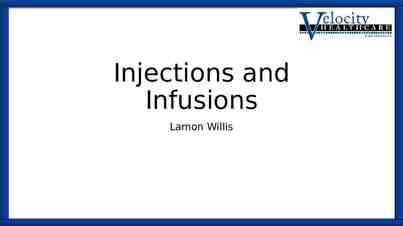1 CHAPTER 5: CELL STRUCTURE AND FUNCTION
72 Slides8.36 MB
1 CHAPTER 5: CELL STRUCTURE AND FUNCTION
2 RECAP: LEVELS OF ORGANIZATION Used to categorize living things Cell is the smallest “living” classification Lesser categorizations: biomolecules, atoms, organelles, etc cannot live independently not alive Categories not black/white E.g. amoeba is both a cell and an organism
3 RECAP: LEVELS OF ORGANIZATION Biotic factor: living things E.g. deer, bacteria, algae Abiotic factor: non-living things E.g. rocks, air, water E.g. measurable characteristics (temperature, salinity, tide, currents) Community: biotic only Ecosystem: biotic & abiotic
4 DISCUSSION: WHY CLASSIFY USING LEVELS OF ORGANIZATION?
5 1) CLASSIFY BIOLOGISTS, RESEARCH Biologist/Field of Study Level(s) of Organization Cell Biology Organelles, Cells Marine Biologist Organism, Population, Community, Ecosystem Cells, Tissues Histology (the study of tissues) Biomechanics (the study of mechanics of living things) Cells Organism Evolutionary Biology Population, (Community/Ecosystem/Biome) Biomolecules (DNA), Cells, Organism Genetics https://www.nature.com/
6 2) EMERGENT PROPERTIES Google “biology wise emergent properties) https://biologywise.com/emergent-properties-explained-in-context-to-biology Answer the following questions: What is an emergent property? What is a non-biological example of an emergent property? Summarize emergence at the cellular, organ, and population/community levels.
7 2) EMERGENT PROPERTIES What is an emergent property? Properties emerging in a complex system that are different from those of the components that make up the system “The whole is greater than the sum of its parts.” What is a non-biological example of an emergent property? A chemical compound (NaCl) is solid at room temperature, but Cl is gaseous. https://biologywise.com/emergent-properties-explained-in-context-to-biology
8 2) EMERGENT PROPERTIES Summarize emergence at the cellular, organ, and population/community levels. Cell is composed of biomolecules and organelles that work together. Organs are made of many cells which work together to achieve the function of the whole organ (e.g. pumping blood or making decisions), which is unachievable with single cells Populations (e.g. of bees, humans) can divide labour to increase societal efficiency. Think of factories where each machine is specialized to do exactly one thing. https://biologywise.com/emergent-properties-explained-in-context-to-biology
9 2) EMERGENT PROPERTIES Example: cells in the retina working together to transmit complex information to the brain https://biologywise.com/emergent-properties-explained-in-context-to-biology
5.1: CELL THEORY 10
11 BEFORE CELL THEORY (1600S) “Spontaneous generation”: all life arose abruptly from inanimate matter Based on observations: Maggots on rotting food Mold on bread Mushrooms from dead trees https://www.science-of-aging.com/timelines/cell-theory-first-question.php
12 PIONEERS IN MICROSCOPY Anton van Leeuwenhoek Invented the microscope Discovered microorganisms, which he called “animalcules” in pond water
13 PIONEERS IN MICROSCOPY Anton van Leeuwenhoek Invented the microscope Discovered microorganisms, which he called “animalcules” in pond water Robert Hooke Discovered cells in plant cork
14 CELL THEORY Three main components: All living things are composed of cells Cells are the basic units of structure and function in living things All cells come from pre-existing cells Modern cell theory (not testable): https://sciencing.com/modern-cell-theory-5492537.html
15 MODERN CELL THEORY (NOT TESTABLE) The cell represents the elementary unit of construction and function in living organisms. All cells come from the division of pre-existing cells. Energy flow – metabolism and biochemistry – happens within cells. Cells contain genetic information in the form of DNA passed on from cell to cell during division. In the organisms of similar species, all cells are fundamentally the same. All living organisms consist of one or more cells. Some cells – unicellular organisms – consist of only one cell. Other living entities are multicellular, containing multiple cells. The living organism's activities depend upon the combined actions of individual, independent cells. https://sciencing.com/modern-cell-theory-5492537.html
5.2: CELL STRUCTURE 16
17 Cells vary in size, shape, structure, function Some characteristics common to all cells: Cell membrane Genetic Material Nucleus Eukaryotes only Cytoplasm
18 CELL MEMBRANE Every cell has a cell membrane that separates it from its surroundings Tightly controls what enters and leaves the cell (food, wastes, signals) Provides protection, support Composed of several kinds of molecules (don’t memorize) Lipids (bilayer) Proteins Carbohydrates
19 CELL WALL Only found in plants, algae, some bacteria Surrounds cell membrane Provides protection, support Porous: allows water, oxygen, carbon dioxide, etc. to pass through Made of cellulose (stringy stuff in celery)
20
21 NUCLEUS A large dark structure found in many cells Contains DNA ‘instructions’ for protein synthesis Information center of the cell Found in eukaryotes only (stay tuned!)
22 PARTS OF A NUCLEUS Nuclear envelope Surrounds nucleus Has many nuclear pores that allow substances to flow in and out of the nucleus Nucleolus Made of RNA and proteins Is where ribosomes are made Helps in protein production
23 PARTS OF A NUCLEUS Chromosomes (testable) DNA in the nucleus of eukaryotic cells is found in large structures called chromosomes Contains genetic information that must be copied to make: Next generation of cells Proteins Does not leave the nucleus
24
25 PARTS OF A NUCLEUS Chromosomes (not testable) Humans have 23 pairs (46) chromosomes Some birth defects (e.g. Down syndrome) involve changes in the number or structure of chromosomes https://www.frontiersin.org/articles/10.3389/fgene.2015.00022/full
26 PARTS OF A NUCLEUS
27 CYTOPLASM The cytoplasm is the area between the nucleus and the cell membrane Helps cell maintain its shape (70% of cell volume) Made of water, dissolved molecules, and organelles
5.3: CYTOPLASMIC ORGANELLES 28
29 CYTOPLASMIC ORGANELLES Organelles are the structures inside the cytoplasm. Each organelle performs a specialized function in the cell Can be thought of as the cell’s “organs”
30 VACUOLES AND PLASTIDS: STORAGE TANKS Vacuoles store materials such as water, salts, proteins, carbohydrates Plastids are plant organelles of various forms and functions Store food and pigments Examples: Chloroplast: photosynthesis Leukoplasts: store starch Chromoplasts: store pigments
31 MITOCHONDRIA AND CHLOROPLASTS Power houses of the cell Generate energy for cell to use, by converting it from one form to another Mitochondria (sing. mitochondrion) Present in all eukaryotes Chloroplasts: Present in plants/algae only Stay tuned!
32 MITOCHONDRIA AND CHLOROPLASTS
33 MITOCHONDRIA AND CHLOROPLASTS Q: Which of these two cells uses more energy? Speculate about the function of each cell. https://scienceisntscary.wordpress.com/2014/02/10/brown-fat-burning-body-fat-instead-of-storing-it/
34 MITOCHONDRIA AND CHLOROPLASTS Q: Which of these two cells uses more energy? Speculate about the function of each cell. https://scienceisntscary.wordpress.com/2014/02/10/brown-fat-burning-body-fat-instead-of-storing-it/
35 RIBOSOMES Ribosomes are the ‘factories’ where proteins are made Made of RNA and protein Among the tiniest organelles! Some attached to membranes, others free-floating
36
37 ENDOPLASMIC RETICULUM (ER) Complex network of sacs Transports materials through the inside of the cell Two types: Smooth: No ribosomes attached Manufactures & transports fats Rough: Has ribosomes attached Manufactures & transports proteins
38 Q: One of the two types (smooth, rough) of ER is usually found right next to the nucleus. Which type is that? Justify your answer.
39 -
40 GOLGI APPARATUS (GOLGI BODY) Modifies and repackages proteins for transport elsewhere (inside or outside cell) Flattened stack of membranes
41 GOLGI APPARATUS (GOLGI BODY)
42 LYSOSOME: CLEANUP CREWS Contains chemicals and enzymes necessary for digestion Digests/breaks down foreign materials Recycles used/dying organelles Absent in plants
43 CYTOSKELETON: FRAMEWORK Framework of filaments and fibers Supports cell structure, drives cell movement Examples: Cilia, flagella Cilia video
44 HOW TO EXPLAIN YOUR ANSWERS
45 Steps HOW TO EXPLAIN YOUR ANSWERS Step 1: Answer the question Step 2: Explain the connection between: - Answer - Course Content - Question Step 3: Concluding statement - Links answer to question if not already clear
46 5. The mouth is the first site of chemical digestion in a human. Your saliva starts the process of breaking down the food you eat. Keeping this in mind, what organelle do you think would be numerous inside the cells of your mouth?
Steps Cheek Cell #1 Step 1: Answer the question The lysosome. Step 2: Explain the connection between: - Answer - Course Content - Question Lysosomes are the organelles responsible for digestion in cells. The chemical digestion that occurs in the mouth would likely rely heavily on lysosomes to break down food. 47 OR Lysosomes are the organelles responsible for digestion in cells. They contain enzymes to break down particles into smaller pieces. Thus, any chemical digestion in the mouth would likely depend on lysosomes. Step 3: Concluding statement -
Steps Cheek Cell #2 Step 1: Answer the question The mitochondria. Step 2: Explain the connection between: - Answer - Course Content - Question Chemical digestion involves enzymes, which are proteins that must be manufactured in cells. This manufacture is an energyconsuming process. Since mitochondria are the organelles responsible for producing energy, many mitochondria would likely be present in the mouth cells. Step 3: Concluding statement - 48
49 MITOCHONDRIA AND CHLOROPLASTS Q: Which of these two cells uses more energy? https://scienceisntscary.wordpress.com/2014/02/10/brown-fat-burning-body-fat-instead-of-storing-it/
50 PRACTICE 1. Suppose you were to compare skin cells of an individual with oily skin and one with dry skin. Which organelle(s) might be more numerous in one sample than the other? Be specific and explain. 2. Cells of the pancreas are involved in synthesizing and releasing large quantities of digestive enzymes. Which two organelles would pancreatic cells have a large quantity of? (Hint: NOT lysosome) 3. Heart muscle cells can have up to 5000 mitochondria each. Explain why this is necessary.
51 PRACTICE
52 ORGANELLE DISORDERS Not directly testable
53 CYSTIC FIBROSIS Disorder in calcium and chlorine ion channels in the cell membrane Balance of salts disrupted abnormal amounts of salts and fluid in affected organs https://ed.fnal.gov/arise/guides/bio/3-Cells/3a-CellsOrganelleAssignmentII.pdf
54 POMPE DISEASE Lysosomes unable to break down glycogen into simple sugars (e.g. glucose) Build-up of glycogen in lysosomes Cell cannot get energy from glucose efficiently Progressive muscle weakness
55 LEIGH SYNDROME An enzyme used in mitochondria is defective Mitochondria cannot produce ATP energy effectively Symptoms in the central nervous system Loss of mental and movement abilities
MITOCHONDRIAL DISEASES 56
57 PRACTICE For the following: identify the organelle or structure involved that is malfunctioning. Indicate whether the organelle/structure is underactive or overactive. Explain your reasoning. 4. A girl accidentally consumes cyanide and dies almost immediately because the conversion of glucose energy to ATP in her cells stops. 5. Charles is diagnosed with neonatal adrenoleukodystrophy (NALD), which is characterized by an inability of his body to break down long-chain fatty acids. 6. A smoker develops lung cancer and is told that the cause of the problem is a population of cells in her lungs that are undergoing mitosis (cell division) at a much greater rate than is normal for lung cells. 7. A couple learns that they will be unable to conceive a child naturally because the man’s sperm are nonmotile. 8. A young child is placed on a milk-free diet because the mucosal cells that line his small intestine do not secrete the enzyme necessary to break down lactose, the disaccharide present in milk.
58 HODGEPODGE DAY Eukaryotes vs Prokaryotes, Cell Specialization Chapter Test: November 5 (Levels of organization, cell theory, cell structure and function,
59 LEARNING OBJECTIVES Prokaryotes vs Eukaryotes Compare and contrast prokaryotes and eukaryotes. Give examples of prokaryotes and eukaryotes. Describe endosymbiotic theory, and link it to the differences in membrane-bound organelles between prokaryotes and eukaryotes. Cell Specialization Give two examples of specialized cells. Explain how their structure/anatomy allows for their functions.
60 LOOKING AHEAD (APPROXIMATE TIMELINE) Oct 30/31: Eukaryote v prokaryote, cell specialization Nov 1/5: Review period Nov 6/7: Chapter 5 Test (Levels of organization, cell theory, cell structure and function, eukaryote v prokaryote, cell specialization) Nov 8-20: Mitosis/Meiosis, Reproduction Nov 26-Dec 5: Photosynthesis/Cellular Respiration Dec. 6-21: Viruses
61 PROKARYOT ES Simple Unicellular organisms Cells are small (0.1 - 5.0 µm)
62 PROKARYOT ES Simple Unicellular organisms Cells are small (0.1 - 5.0 µm) Examples: Bacteria Escherichia coli Streptococcus sp. Archaea
63 (ARCHAEA AT YELLOWSTONE NATIONAL PARK)
64 PREVIEW (NOT TESTABLE YET)
65 EUKARYOTES Complex Mostly multicellular organisms Cells are larger (10 – 100 µm) Examples: Potato Yeast Paramecium spp.
66 PROKARYOTES VS EUKARYOTES All cells have:* Cell membrane Cytoplasm Ribosomes DNA *slight revision from previous slides
67 PROKARYOTES VS EUKARYOTES Only eukaryotes have membranebound organelles: Nucleus* ER Golgi body Lysosome Mitochondria, (Chloroplasts)
68 PROKARYOTE EUKARYOTE Etymology (Greek): “Eu-” well, good “Karyon” kernel (nucleus) Has a nucleus More than one chromosome (linear DNA) Etymology (Greek) “Pro-” before “Karyon” kernel (nucleus) No nucleus Has nucleoid instead One “chromosome” (circular DNA)
69 PROKARYOTE S Additional protection/support: All have cell wall Many have capsules
70
71
72 FURTHER READING https://courses.lumenlearning.com/biology1/chapter/comparin g-prokaryotic-and-eukaryotic-cells/ https://www.cliffsnotes.com/study-guides/biology/biology/thebiology-of-cells/prokaryote-and-eukaryote-cell-structure https://www.diffen.com/difference/Eukaryotic Cell vs Prokary otic Cell













































































